Genshin Archetype Investigation: Raiden Shogun
This article is dedicated to exploring and introducing the archetypal origins and narrative lineage of Genshin Impact characters, with this installment focusing on the Raiden Shogun - Inazuma's absolute Martial Deity and the most revered figure among its people. We hope fellow Travelers who admire the Raiden Shogun will delve deeply into this article to uncover lesser-known insights into her mythic and historical inspirations.
1. The Raiden Siblings & Their Past in Genshin Impact
The Raiden Shogun, one of The Seven Archons, originated as twin sister deities. The elder sister, Baal (Raiden Makoto), and the younger sister, Beelzebul (the Shogun herself), united to claim victory in the Archon War millennia ago, ascending as Inazuma's sovereigns. To the people of Inazuma, "Baal" and the Raiden Shogun were perceived as a singular divine entity, with few aware of their duality-thus both the Archon's true name, "Baal," and the title "Raiden Shogun" historically encompassed both sisters.
However, Baal perished during the Cataclysm 500 years ago. Inheriting her sister's final mandate, Beelzebul assumed the Electro Archon's duties. For five centuries, she guarded Inazuma as its deity, yet her relentless pursuit of "Eternity" entrenched the nation in isolationist policies.

This stalemate persisted until a courageous Traveler and their "emergency food" companion arrived, stirring winds of change unseen in half a millennium. But that is a tale for another time-let us refocus on the Raiden Shogun herself.
2. Genshin Impact-Raiden Makoto (Baal) Character Archeology
Let us begin with the elder sister, "Raiden Makoto"! Raiden Makoto, whose true Archon name is "Baal," derives her nomenclature from "Baal Hadad" among the Seventy-Two Demons of Solomon. Baal is recorded as the first-ranked Demon King in The Lesser Key of Solomon, also known by the epithet "Bael."

Regarding Baal's mythological origins, one theory traces him to the Canaanite pantheon as the chief deity-god of the sun, storms, and fertility. In Phoenician mythology, "Baal" initially denoted a specific divine entity but later evolved into a generic term for "lord" or "master." Ugaritic myths describe him as the son of the supreme god El and the grain deity Dagon, husband-brother to the warrior goddess Anat. Biblical accounts alternatively posit Asherah as his consort.
In the ancient Near East, Baal was universally venerated as a storm god. Yet in arid regions, agrarian cultures revered him as a fertility deity. He was both sibling and rival to the sea god Yam-Nahar and the death god Mot. His battles with Yam symbolize his dominion over floods and aquatic chaos, while his conflict with Mot represents his role as a life-sustaining bringer of rain and harvests.

In biblical contexts, "Baal" specifically refers to the Ugaritic mythological deity. Historically, Baal's worship clashed with that of Yahweh, whose eventual supremacy assimilated aspects of Baal's iconography-Yahweh's depiction as a white-haired elder likely originates from El. Later mythographies often portray Baal anthropomorphically or as a bull, yet The Lesser Key of Solomon (Ars Goetia) describes him as a grotesque amalgam of cat, human, and toad, hoarse-voiced, granting invisibility and expertise in carnal and legal arts. Religious statuary frequently depicts him as a warrior wielding a mace and lightning-shaped spear.
In Northwest Semitic languages, "Baal" signifies "lord"-a title once emblematic of strength, dominion, law, justice, and valor. Yet through mythological evolution, Baal became conflated with infernal royalty. In Genshin Impact's lore, after Baal and Beelzebul triumphed in the Archon War, the elder sister Baal established the shogunate to rule Inazuma as its Archon, while the younger sister Beelzebul served as her "kagemusha" (shadow warrior), compensating for Baal's physical frailty with peerless martial prowess. Until the "Divine Cataclysm" five centuries prior, they governed Inazuma in complementary duality-one in light, the other in shadow.

This narrative arc appears to draw inspiration from Akira Kurosawa's seminal film Kagemusha (Shadow Warrior). In the film, Takeda Shingen's abrupt demise during military campaigns plunges his dominant clan into succession crises and morale collapse. To stabilize the fracturing forces, retainers recruit a Shingen doppelgänger-a petty thief turned "kagemusha"-to impersonate the deceased warlord. The ruse holds for three years until exposed by Takeda kin, enabling Shingen's heir Katsuyori to seize power and recklessly march against Oda Nobunaga, culminating in the clan's catastrophic defeat at Nagashino and eventual decline. Kurosawa's masterpiece cemented the "kagemusha" archetype into Takeda Shingen's historical-literary legacy.
3. Genshin Impact-Raiden Ei (Beelzebul) Character Archeology
Having explored the elder sister, let us now turn to the younger sibling "Raiden Ei." To excavate the archetypal roots of the current Electro Archon "Raiden Ei," we must first examine her true Archon name-"Beelzebul"-which aligns with the infamous demonic entity "Beelzebub." Also known as the "Lord of the Flies" or "Prince of Excrement," Beelzebub originated as a Philistine deity before being demonized in Abrahamic traditions as the embodiment of gluttony (one of the Seven Deadly Sins) and the Seventh Prince of Hell. The New Testament labels him "Prince of Demons," while demonology elevates him to Hell's supreme commander.

John Milton depicted Beelzebub as a fallen angel of formidable intellect and authority. Notably absent from Solomon's Seventy-Two Demons, Beelzebub emerged from the monotheistic degradation of Canaanite Baal worship-a narrative parallel to Beelzebul's role as Baal's "kagemusha" in Genshin Impact. Originally titled "Baal-Zebub" ("Lord of the High Place"), the name likely derived from Baal's epithet as a storm and fertility deity.

However, the Hebrews settling in Canaan (modern-day Israel) rejected Philistine rituals, denouncing "Baal-Zebub" as a pagan abomination. Through linguistic pejoration, "Baal-Zebub" mutated into "Beelzebub"-"Lord of the Flies"-a derogatory epithet immortalized in biblical texts, cementing his demonic identity in later esoteric traditions.
Now let us dissect the Raiden Shogun's design through the lens of divine duties and regional mythos. Her honorific title-"Almighty Narukami Ogosho"-can be deconstructed into multiple elements.
When executing her Elemental Burst, the Shogun manifests six violet electro-drums resembling those adorning Inazuma's Statues of the Seven. This visual motif directly references Takemikazuchi's iconography, though mythic depictions typically show him with eight drums. The "Narukami" component aligns with Japan's indigenous thunder deity of the same name, symbolizing her role as Electro Archon.

The suffix "Ogosho" traces to Tokugawa Ieyasu, founder of the Edo Shogunate. Originally denoting retired shoguns, the term now signifies individuals wielding de facto authority-a fitting epithet for Inazuma's deific ruler.
The Raiden Shogun's spiritual retreat into the "Plane of Euthymia" in pursuit of Eternity draws conceptual parallels to Tokugawa Ieyasu's devotion to Jōdo-shū (Pure Land Buddhism). Founded by Hōnen, Jōdo-shū doctrine emphasizes "renouncing the impure world and aspiring to the Pure Land." Historical records recount how Ieyasu, after his defeat at Okehazama by Oda Nobunaga, fled to Daijuji Temple intending ritual suicide. The temple's abbot, Tōei Shōnin, dissuaded him by invoking the Jōdo-shū mantra "厭離穢土・欣求浄土" (Reject the Defiled World, Embrace the Pure Land). This philosophy later adorned Ieyasu's battle standards and shaped his governance ethos.

Simultaneously, her constellation "Imperatrix Umbrosa" evokes the legacy of Toyotomi Hideyoshi, the "Unifier of Japan," who enacted the 1588 "Sword Hunt Decree"-a" historical precursor to Inazuma's Vision Hunt Decree. Hideyoshi's edict disarmed peasants to quell rebellions, mirroring the Shogunate's confiscation of Visions to suppress mortal ambitions.
4. Inazuman Culture & Japan's Edo Shogunate Parallels

We can discern that Inazuma's cultural elements primarily draw from Japan's Edo-period archetypes. The Raiden Shogun's feat of slaying the serpent Orobashi with her "Musou no Hitotachi" mirrors the legendary tale of Susano'o-no-Mikoto vanquishing Yamata-no-Orochi. Susano'o, more widely known by his epithet "Storm God," is one of the Three Noble Children born to Izanagi, alongside Amaterasu and Tsukuyomi.

The Kojiki depicts Susano'o as a mercurial deity of destruction-initially appointed by Izanagi as ruler of the seas, he defied this mandate to storm Takamagahara (the Plain of High Heaven). His duality as both a wrathful force and heroic slayer of Orochi (from whose tail he extracted the sword Kusanagi-no-Tsurugi, later enshrined as one of Japan's Imperial Regalia) aligns strikingly with Beelzebul's identity as Inazuma's Martial Archon-a figure synonymous with invincibility.
The name "Susano'o" itself evokes tempests ("violent wind"), cementing his role as a storm deity and exorcist of calamity. Some myths posit him as an emanation of Izanagi's breath, his turbulent nature literalized through nasal exhalations. Notably, scholarly debates suggest Tsukuyomi and Susano'o may represent dual aspects of a singular lunar-storm deity-could "Beelzebul" cryptically allude to Tsukuyomi's lunar symbolism, reflecting the sisters' shared divine sovereignty in Inazuman lore?
5. Genshin Impact-The Raiden Shogun & the Raiden Siblings
Finally, let us examine the narrative interplay between the playable "Raiden Shogun" and her creator-sister. To pursue Eternity, Ei forged a "perfect vessel"-the Raiden Shogun puppet-to endure erosion and enforce her ideals, then retreated into the Plane of Euthymia. This puppet inherited the title "Raiden Shogun" to eternally safeguard Inazuma.

Ei programmed the Shogun with contingencies against all threats, including her own potential betrayal of "Eternity." When the Traveler's influence destabilized Ei's convictions, the Shogun judged her creator an enemy of eternity. The puppet confronted Ei within their shared consciousness, initiating an aeonic duel resolved only through Makoto's residual guidance and the Traveler's intervention, culminating in Ei transcending her past traumas to earn the Shogun's acknowledgment.
The Shogun's transformed state during this metaphysical battle-"Magatsu Mitake Narukami no Mikoto"-epitomizes her role as Eternity's enforcer. As a perpetual Trounce Domain boss, this multi-armed deity stunned players with its visual grandeur. Design-wise, it references Myōken Bodhisattva: in Japanese Buddhism, Myōken (rarely depicted in statuary) is envisioned as an armored warrior astride a tortoise-serpent hybrid, wielding swords in two or four arms to symbolize disaster eradication and national protection-a motif reimagined through the Shogun's wrathful, guardian-god aesthetic.

This concludes our archeological exploration of the Raiden Shogun. We've compiled extensive historical and mythic parallels underlying her design. Have these analyses deepened your appreciation for the divine and mortal threads woven into Inazuma's Eternity? Stay tuned for more Genshin Impact character studies, and don't miss exclusive Raiden Shogun merchandise!












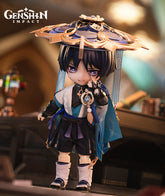
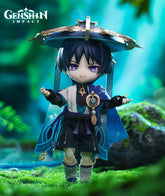


![[Official Merchandise] Raiden Shogun Magnetic Power Bank Gift Box](http://genshinfans.com/cdn/shop/files/Raiden-Shogun-power-bank-gift-box_165x.jpg?v=1719377016)
![[Official Merchandise] Raiden Shogun Magnetic Power Bank Gift Box](http://genshinfans.com/cdn/shop/files/Raiden-Shogun-power-phone-holder_165x.jpg?v=1719377017)
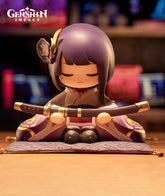
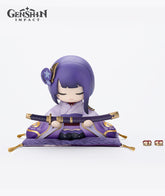
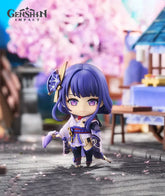
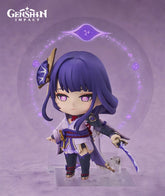
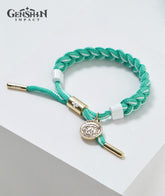



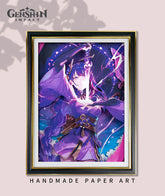
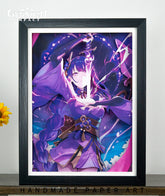
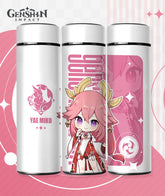
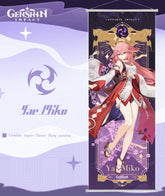

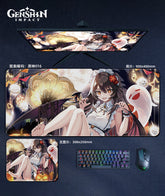
![[Official Merchandise] Genshin Impact Inazuma Character Day of Destiny Birthday Series Gift Box Set](http://genshinfans.com/cdn/shop/files/ZT01_5590eb19-2c1c-4fbe-905f-08af52ae9718_165x.jpg?v=1693551630)
![[Official Merchandise] Genshin Impact Inazuma Character Day of Destiny Birthday Series Gift Box Set](http://genshinfans.com/cdn/shop/products/SKU-23-Kamisato-Ayaka_165x.jpg?v=1693552021)
![[Official Merchandise] Genshin Impact Sweet Summer Glitter Quicksand Mirror](http://genshinfans.com/cdn/shop/files/05_80b358f1-9add-4720-8eda-096df80dec29_165x.jpg?v=1700897642)
![[Official Merchandise] Genshin Impact Sweet Summer Glitter Quicksand Mirror](http://genshinfans.com/cdn/shop/files/ZT03_0be16567-f47b-47c7-a866-5ae2e0911e6b_165x.jpg?v=1700897214)
![[Official Merchandise] Genshin Impact Characters Birthday Acrylic Charms](http://genshinfans.com/cdn/shop/files/genshin-birthday-charms_165x.jpg?v=1716366764)
![[Official Merchandise] Genshin Impact Characters Birthday Acrylic Charms](http://genshinfans.com/cdn/shop/files/Alhaitham_4808fb3e-8f21-4a7a-8195-6933936d4b50_165x.jpg?v=1716366776)
![[Official Merchandise] Genshin Impact Characters Birthday Acrylic Fridge Magnets](http://genshinfans.com/cdn/shop/files/genshin-impact-gifts_165x.jpg?v=1716359785)
![[Official Merchandise] Genshin Impact Characters Birthday Acrylic Fridge Magnets](http://genshinfans.com/cdn/shop/files/ALHAITHAM_165x.jpg?v=1716359806)
![[Official Merchandise] Genshin Impact Genius Invokation TCG Tournament Mouse Pad](http://genshinfans.com/cdn/shop/files/Genius-Invokation-TCG-Mouse-Pad-03_165x.jpg?v=1714980399)
![[Official Merchandise] Genshin Impact Genius Invokation TCG Tournament Mouse Pad](http://genshinfans.com/cdn/shop/files/Genius-Invokation-TCG-Mouse-Pad-01_165x.jpg?v=1714980398)
![[Official Merchandise] Genshin Impact Genius Invokation TCG Acrylic Phone Stand](http://genshinfans.com/cdn/shop/files/merch_165x.jpg?v=1714469221)
![[Official Merchandise] Genshin Impact Genius Invokation TCG Acrylic Phone Stand](http://genshinfans.com/cdn/shop/files/SKU-10_7899ff05-44a5-4cf4-bdc3-e9145de86ac9_165x.jpg?v=1714469221)
![[Official Merchandise] Genshin Day of Destiny Birthday Series Acrylic Charm](http://genshinfans.com/cdn/shop/files/ZT01_7d069d9c-ac6a-4f04-964e-5c642819f0fa_165x.jpg?v=1721886803)
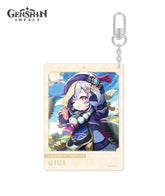
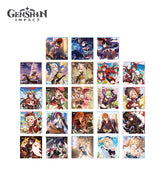
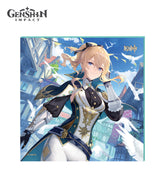
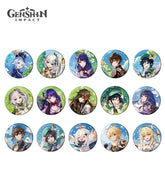
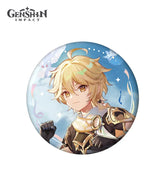
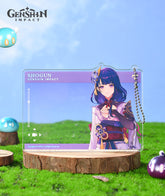
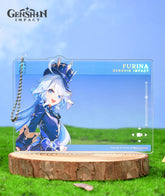
![[Official Merchandise] Genshin Day of Destiny Birthday Series Character Badges](http://genshinfans.com/cdn/shop/files/ZT01_59574abe-33ac-4abf-956a-489e20e13005_165x.jpg?v=1721887271)
![[Official Merchandise] Genshin Day of Destiny Birthday Series Character Badges](http://genshinfans.com/cdn/shop/files/02_07d5d542-2386-4877-95ec-07d0284c7a53_165x.jpg?v=1721887284)